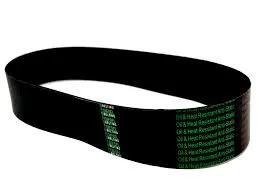- Arabic
- French
- Russian
- Spanish
- Portuguese
- Turkish
- Armenian
- English
- Albanian
- Amharic
- Azerbaijani
- Basque
- Belarusian
- Bengali
- Bosnian
- Bulgarian
- Catalan
- Cebuano
- Corsican
- Croatian
- Czech
- Danish
- Dutch
- Afrikaans
- Esperanto
- Estonian
- Finnish
- Frisian
- Galician
- Georgian
- German
- Greek
- Gujarati
- Haitian Creole
- hausa
- hawaiian
- Hebrew
- Hindi
- Miao
- Hungarian
- Icelandic
- igbo
- Indonesian
- irish
- Italian
- Japanese
- Javanese
- Kannada
- kazakh
- Khmer
- Rwandese
- Korean
- Kurdish
- Kyrgyz
- Lao
- Latin
- Latvian
- Lithuanian
- Luxembourgish
- Macedonian
- Malgashi
- Malay
- Malayalam
- Maltese
- Maori
- Marathi
- Mongolian
- Myanmar
- Nepali
- Norwegian
- Norwegian
- Occitan
- Pashto
- Persian
- Polish
- Punjabi
- Romanian
- Samoan
- Scottish Gaelic
- Serbian
- Sesotho
- Shona
- Sindhi
- Sinhala
- Slovak
- Slovenian
- Somali
- Sundanese
- Swahili
- Swedish
- Tagalog
- Tajik
- Tamil
- Tatar
- Telugu
- Thai
- Turkmen
- Ukrainian
- Urdu
- Uighur
- Uzbek
- Vietnamese
- Welsh
- Bantu
- Yiddish
- Yoruba
- Zulu
Oct . 13, 2024 21:28 Back to list
Guide to Replacing a Serpentine Drive Belt for Optimal Vehicle Performance
Understanding Serpentine Drive Belt Replacement
The serpentine drive belt, an essential component of modern vehicles, plays a crucial role in the overall functionality of the engine. This flexible belt powers multiple peripheral devices, including the alternator, power steering pump, water pump, and air conditioning compressor. Given its importance, regular maintenance and timely replacement of the serpentine drive belt are vital for keeping your vehicle in optimal condition. In this article, we will explore the signs indicating that it's time for a replacement, the process involved, and the benefits of regular maintenance.
Signs That Your Serpentine Drive Belt Needs Replacement
Identifying the need for a serpentine drive belt replacement can save you from unexpected breakdowns and costly repairs. Here are some common signs to look out for
1. Visual Wear and Tear Inspect the belt for cracks, fraying, or signs of excessive wear. A worn-out belt can lead to machinery malfunction, so a visual inspection should be performed regularly.
2. Squeaking or Chirping Noises If you hear a high-pitched squeal or chirp when starting the engine or while driving, it may be due to a loose or damaged belt. These sounds often indicate that the belt is slipping on the pulleys.
3. Loss of Power Steering If the power steering feels less responsive or difficult to operate, it might be due to a malfunctioning serpentine belt. Since this belt drives the power steering pump, a failure here can affect the steering system's efficiency.
4. Engine Overheating A failing serpentine belt can also affect the water pump's functionality, leading to engine overheating. If your engine temperature gauge is rising, it's worth checking the belt.
5. Dashboard Warning Lights Modern vehicles are equipped with various sensors that monitor the performance of engine components. A failing serpentine belt may trigger warning lights on the dashboard, including those indicating issues with the charging system or engine temperature.
The Replacement Process
Replacing your serpentine drive belt can be a DIY project if you have basic mechanical skills and tools
. Here’s a simplified outline of the processserpentine drive belt replacement

1. Preparation First, ensure you have the right replacement belt for your vehicle. Refer to your owner’s manual for specifications and recommended replacement intervals.
2. Gather Tools Collect the necessary tools, including a socket set, a wrench, and a belt tensioner tool, if required.
3. Safety First Always disconnect the negative battery terminal before starting work. Additionally, ensure your vehicle is on a flat surface and the engine is cool.
4. Remove the Old Belt Locate the belt tensioner and use the appropriate tool to release tension. Once the tension is released, remove the old belt from the pulleys.
5. Install the New Belt Refer to the belt routing diagram, usually found under the hood, to install the new serpentine belt. Ensure that the belt sits properly on all pulleys.
6. Test for Functionality Reconnect the battery terminal, start the engine, and observe the belt in action. Listen for unusual sounds and ensure that all accessories are functioning correctly.
7. Final Checks After a brief test drive, recheck the belt’s tension and alignment. It’s normal for the belt to stretch slightly after installation, so a second check ensures everything is secure.
Benefits of Regular Maintenance
Regular maintenance of your serpentine drive belt can extend its lifespan and improve overall vehicle performance. By keeping an eye on its condition and addressing issues early, you can avoid costly repairs and improve your vehicle's reliability. Additionally, a well-maintained vehicle promotes safety on the road, reducing the chances of breakdowns in critical situations.
In conclusion, understanding the importance of the serpentine drive belt and knowing when to replace it can make a substantial difference in your vehicle's functionality and longevity. Whether you choose to do it yourself or seek professional help, timely replacement and awareness of symptoms are key to maintaining a healthy engine and a smooth driving experience. Always remember that a little proactive care today can substantially reduce the risk of unexpected troubles tomorrow.
-
Korean Auto Parts Timing Belt 24312-37500 For Hyundai/Kia
NewsMar.07,2025
-
7PK2300 90916-T2024 RIBBED BELT POLY V BELT PK BELT
NewsMar.07,2025
-
Chinese Auto Belt Factory 310-2M-22 For BMW/Mercedes-Benz
NewsMar.07,2025
-
Chinese Auto Belt Factory 310-2M-22 For BMW/Mercedes-Benz
NewsMar.07,2025
-
90916-02660 PK Belt 6PK1680 For Toyota
NewsMar.07,2025
-
drive belt serpentine belt
NewsMar.07,2025

